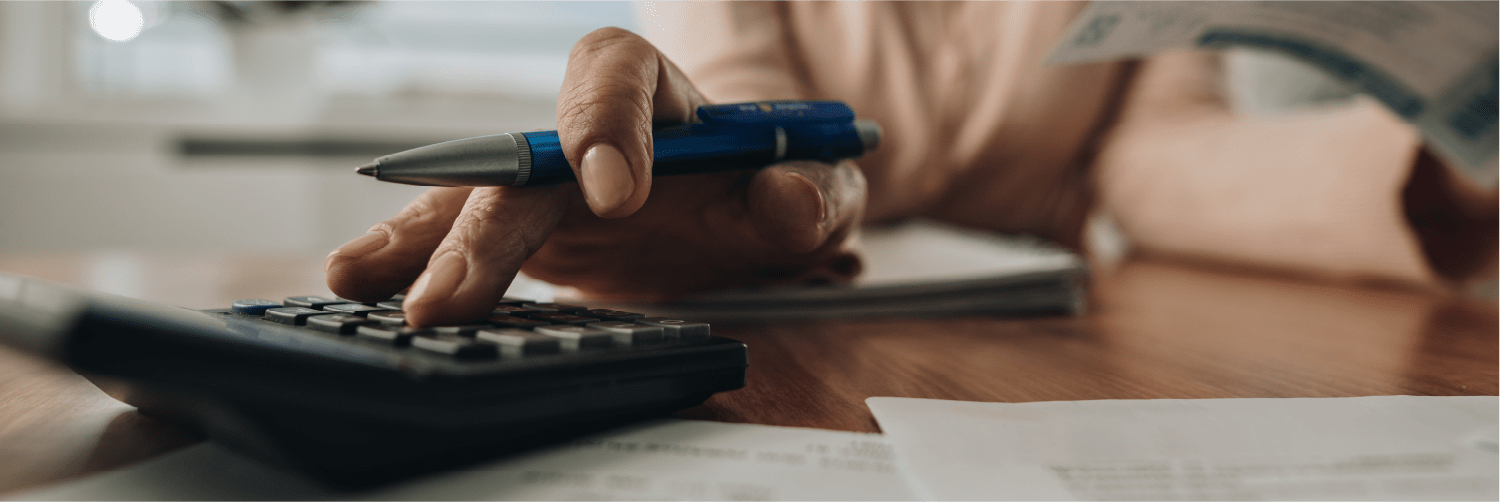
The information provided on this website does not, and is not intended to, act as legal, financial or credit advice. See Lexington Law’s editorial disclosure for more information.
The purpose of a rainy day fund is to have money set aside that is readily available for life’s unexpected financial situations that tend to occur outside of your normal living expenses.
When it comes to your finances, not every day can be rainbows and sunshine, and unexpected expenses can pop up more often than you’d like. While budgeting is an essential part of financial planning, sometimes setting aside money for unplanned expenses can go right over your head. To avoid going into debt over small inconveniences, setting aside money and putting it into a rainy day fund is crucial.
In this article, we’ll go over what a rainy day fund is, how it differs from an emergency fund and how much you should be saving. We will also give you tips on how you can save for those stormy days.
What is a rainy day fund?
The purpose of a rainy day fund is to have money set aside that is readily available for life’s unexpected financial situations that tend to occur outside of your normal living expenses. Whether you need to buy a new phone or have to pay for an unexpected car repair, a rainy day fund can help you cover the costs of these unplanned and inconvenient situations.
If not accounted for, these costs can disrupt your monthly budget, which can in turn increase your chances of going into credit card debt. Having a financial cushion such as a rainy day fund can help individuals afford the costs of these expenses and avoid racking up unnecessary debt.
Rainy day fund vs. emergency fund
Though they may seem similar, emergency funds and rainy day funds are not the same. Emergency funds are meant for larger financial emergencies and act as a financial safety net when things like a job loss or a sudden medical expense occurs.
Should an emergency like this happen, you would have money to cover everyday expenses, such as rent, groceries, car payments and other recurring bills. Many experts recommend having at least three to six months’ worth of living expenses saved in an emergency fund, but this amount can differ depending on your circumstances.
In simple terms, emergency funds are used for great financial hardships, while rainy day funds are used to cover smaller, unforeseen expenses.
How much should you have in a rainy day fund? Saving for a rainy day fund can look different for everyone depending on their needs and lifestyle but having at least $500 to $1,000 saved is usually recommended. This amount should be able to cover smaller expenses that come up and help put your mind at ease whenever they occur.
When forecasting your rainy day budget, consider any long-term expenses that could pop up. Do you have a pet that is nearing old age that may need to be taken to the vet any time soon? Maybe you have children and want to budget for those impromptu doctor’s office visits. Whatever your situation, a rainy day fund can be the umbrella that protects you from any unexpected financial storm.
Where should I put my rainy day fund?
Your rainy day fund should be liquid, meaning it is easily accessible to you and can be pulled out at any given moment, without any additional fees. Money market accounts, high-yield bank accounts and traditional savings accounts are all great options that can keep your money safe and accessible. Your rainy day fund should be kept separate from your other accounts, such as your emergency fund. Avoid tapping into your savings, as this money should only be used when small inconveniences arise.
4 quick tips on saving for a rainy day fund
Saving for a rainy day fund can be fairly simple. Since these accounts are for smaller expenses and don’t require a hefty amount of cash, you can likely save up enough money within a year. Here are four quick saving tips to help get you started:
1. Tighten up your budget
As with any savings account, you want to take a hard look at your budget and see if you can afford to cut down some of your spending. For example, you can save money by eating out less and cooking at home more. You can also limit your coffee runs to only once a week as opposed to every day. This type of spending adds up, and by tightening up your budget a bit, you’ll be able to quickly put that money into your rainy day savings.
2. Set up automatic transfers
Automatic transfers are an easy way to put cash aside without even having to think about it. Set up an automatic transfer from your checking account to your savings account and determine a monthly amount that is feasible for your budget. Transferring $50 every month will put your savings account at $600 in one year.
Another option is a swipe-and-save feature, which most banks offer. Each time you swipe your debit card, your bank will automatically transfer $1—or any amount you choose—into your savings account. Though this may seem like a small amount, you’d be surprised how fast it can add up.
3. Save your change
Saving your spare change and cash may seem old school, but it’s an extremely effective way to save for your rainy day fund. Extra cash from a birthday or holiday can go straight into a savings jar. Eventually, you can build up your cash savings and add it to your rainy day fund whenever the time is right.
4. Open a dedicated rainy day savings account
As mentioned, a high-yield savings account is a great option for storing your rainy day fund. Not only are these funds easily accessible, but you’re also able to earn interest on each deposit you make. Shop around for accounts that will make the most sense for you—keep interest, deposit requirements and fees in mind. If you don’t have to tap into your rainy day fund often, you can end up earning more money than you would in a traditional savings account.
Though it’s impossible to prepare for all of life’s unexpected events, setting up a rainy day fund can help give you peace of mind should any financial storms come your way. Keep educating yourself on how to prepare for these life events to ensure that you keep your credit health in good standing.
Note: Articles have only been reviewed by the indicated attorney, not written by them. The information provided on this website does not, and is not intended to, act as legal, financial or credit advice; instead, it is for general informational purposes only. Use of, and access to, this website or any of the links or resources contained within the site do not create an attorney-client or fiduciary relationship between the reader, user, or browser and website owner, authors, reviewers, contributors, contributing firms, or their respective agents or employers.
